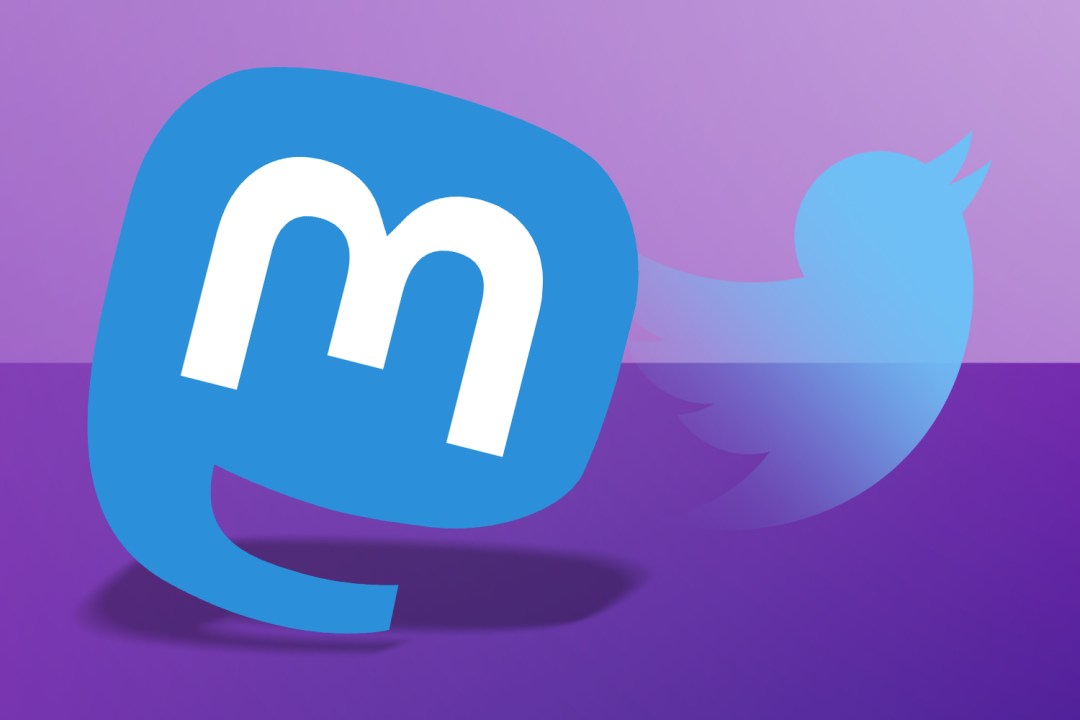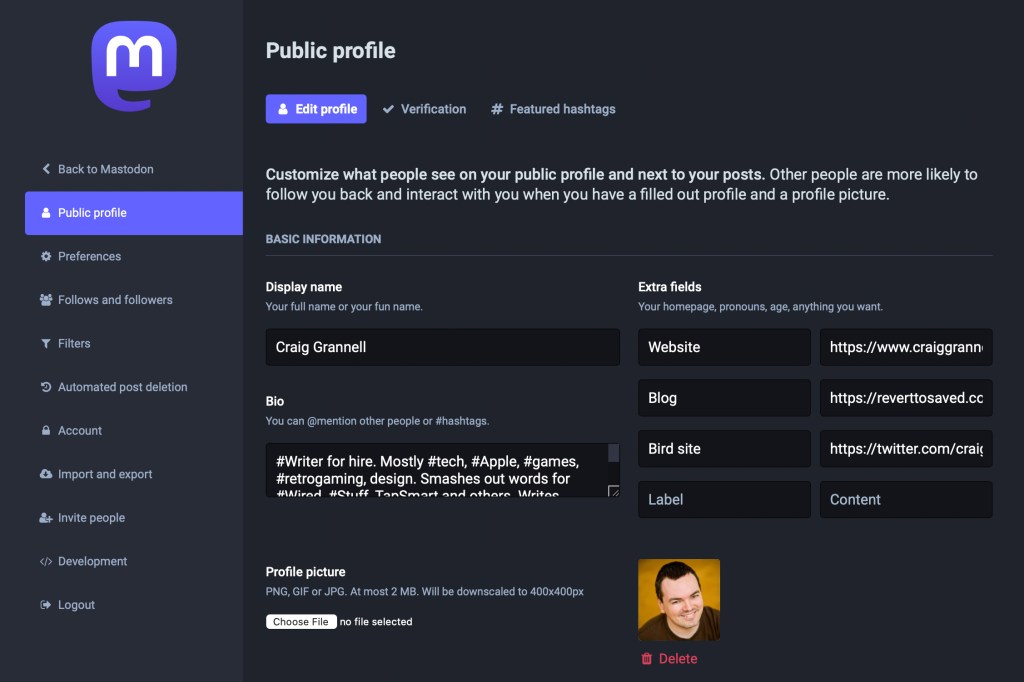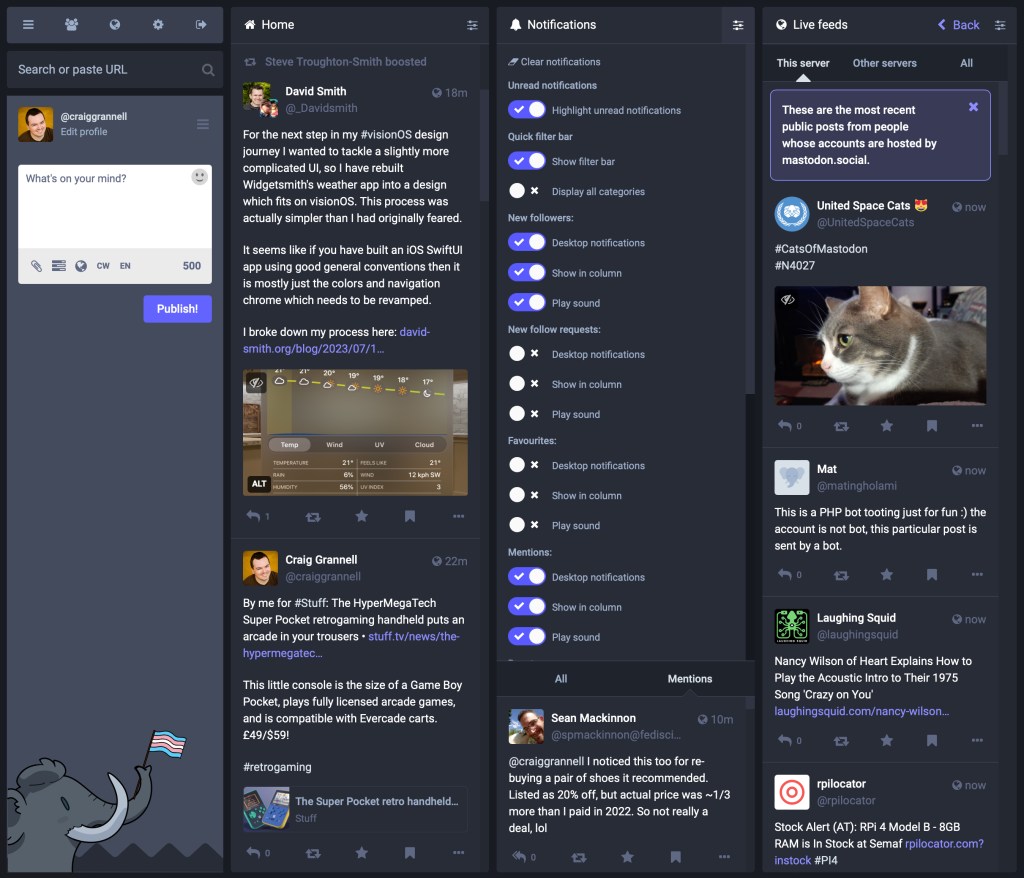What is Mastodon? All you need to know to switch from Twitter
Not keen on a whiff of Musk? Get your microblog on with Mastodon instead

Elon Musk is busy setting fire to Twitter. He long ago decreed every Twitter user must pay him $8 per month or he’d throw their tweets in a bin. Since then, Twitter under his direction wrecked its verification system, fired most of its staff, shut down its Trust & Safety Council, suspended journalists, banned third-party Twitter apps, blocked Substack links, annoyed advertisers and regulators, temporarily gated the entire site, and rate-limited tweets. It’s exhausting.
Having noticed the direction of travel, many Twitter users aren’t keen on staying put in a bus being driven towards a cliff. We have Threads now, the Mark Zuckerberg Twitter rival that has signed up 100 million users in just a week.
But people have also become curious about Mastodon. The service is named after an extinct beast and looks a lot like Twitter – in much the same way Linux looks a lot like Windows. Take that as both a warning and a compliment.
What is Mastodon anyway?
Social networking that’s not for sale, according to the Mastodon website. And that’s because Mastodon is a decentralised network, not owned by a single person or company. Think of it a bit like a bunch of servers that are effectively little Twitters that all talk to each other. Because of this (and some other reasons), Mastodon does have a reputation for being difficult to use. But we reckon it’s easy. Well, easyish. At least if you read and follow the advice in this guide.
How do I choose a Mastodon server?
The official Android and iOS app urges you to join mastodon.social. This is the largest server, run by the creator of Mastodon. However, you can pick an alternative. Some servers are niche, aimed at specific interests. Others are geared towards a specific language. On the official website, there’s a list. And it’s at this point some folks grumpily state: “I’m out.”
We get it. When you sign up for Twitter, you don’t have to choose between Twitter.social or Twitter.fancypants. It’s all just Twitter. So, yes, there’s a barrier. And ideally you’d check out a server’s policies and rules before settling. You can always ask friends who’ve bolted from Twitter to Mastodon if they’re happy where they’ve ended up. And instances.social can help you narrow things down.
Does it matter which server I pick?
Plenty of folks argue it doesn’t. But that’s only true in as much as you can follow people on other servers. However, servers will sometimes block others – or shut down entirely. You’re supposed to be given fair warning about such things, but that doesn’t always happen.
Also, while it is possible to move servers, doing so is currently a faff and you retain only your social graph, not your post history. (That stays on the old server.) And if you don’t move servers in time when one closes, you lose everything.
Another barrier? Yep. Still, most servers don’t have such problems, and the larger ones don’t tend to disappear. For newcomers, that can be a boon. Also, err on the side of caution by regularly backing up your posts from Mastodon’s preferences, if you care about them that much. And if you value the server you use, regardless of its size, support its upkeep by donating.
How do I get started with Mastodon?
Choose a server. Sign up with a username and password, and then sign in. Remember your chosen server. You’ll get an error message if you try logging into another Mastodon instance.

Once you’re signed in, that’s the tricky bit done with. So head to Preferences > Public profile and complete your display name and bio. To help people to more easily find you from Twitter, mirror your profile from there, as far as possible, including imagery. If relevant, add metadata title/URL pairings, which appear on your profile page as a table. This avoids cluttering your bio with links.
Next, craft a first post that says a bit about you that includes the #introduction tag. Many Mastodon users browse this hashtag to find new and interesting people to follow. On that basis, also regularly dip into #introduction yourself.
But how do I find all my Twitter friends?
There’s no magic wand for getting your Twitter follows to Mastodon. Twitter has blocked most automated services. Fedifinder can help, but is reliant on publicly available data, and you’ll likely only end up with a list comprising a fraction of your follows, even if more of them have Mastodon accounts. But when you have a CSV of your follows, it can at least be imported without fuss .Use Preferences > Import and export – and then merge the new items with your existing follows.
Elsewhere, you can search on Twitter for ‘Mastodon’ and filter replies to ‘People you follow’, to find Mastodon handles, along with keeping an eye out for them in Twitter bios and posts. You can also search for people individually in Mastodon itself (using #Explore) and follow them. Additionally, Explore > For You in the mobile app can help you find more people you’d like to follow, as can #followfriday and the hand-picked Fedi.directory.
To let other people know about your Mastodon account, share your handle. It’s in the form @[username]@[server] (eg @[email protected]). You can also provide a link to give people direct access; this takes the form https://server/@username (eg https://mastodon.social/@craiggrannell).
Any other important stuff?

Loads.
- Posts on most servers allow up to 500 characters, along with polls and images. Add descriptive ‘alt’ text to images. Avoid doing so and you’ll probably get a telling off.
- Content warnings/wrappers are optional on Mastodon. Apply one – usually with a CW or ‘!’ button – to screen a sensitive post until it’s clicked/tapped. Fewer people do this on Mastodon than in the old days. Nonetheless, we recommend using CWs for triggering topics. They can also be used to temporarily hide long posts, or just for fun reveal-o-posts.
- Do not use link shorteners. There’s no need. Links on Mastodon all count as 23 characters, regardless of whether you paste in the full thing or an obfuscated version.
- Videos can be attached to posts. However, these increase server hosting costs. So consider uploading to YouTube or Vimeo and linking instead.
- Posts can be edited – tap/click … and then Edit. Be mindful revisions remain available.
- Boosts (akin to retweets) push posts into friends’ feeds; favourites (likes) do not. Boost and favourite often.
- Hashtags are a vital means to group and discover content – far more than on Twitter. But #do #not#hashtag #every #word #or #people #will#hate #you.
- Direct messages exist on Mastodon, but there’s no end-to-end encryption. They are potentially visible to admins so do not use them for sensitive information.
- Usernames exist per server. Don’t be surprised if someone else also uses ‘your’ username. Brands beware.
- Account verification is possible, but requires you have a website you can edit and link to Mastodon from. Find details in Preferences > Public profile > Verification.
- You have three default feeds: Home is your follows. Local is everyone on your server, regardless of whether you follow them. Federated includes everyone across all servers known by yours – and not filtered by your admin.
- You can block individuals – or even entire servers. And you can create lists, like on Twitter, if your Home feed rages out of all control.
- Mastodon’s preferences panes have many options, including post auto-deletion. Spend time exploring them.
- Advanced view in desktop browsers gives you a Tweetdeck-like multi-column view. In fact, do all heavy lifting in the browser.
- Mobile Mastodon apps have improved greatly over the past year or two. Beyond the official, free Mastodon app for Android and iOS, there are many third-party options. Our favourites are Tusky for Android, Ice Cubes for iPhone/iPad, and Ivory for iPhone/iPad/Mac.
Got all that? Fab. Want more tips? Head to the excellent fedi.tips.
So is Mastodon worth all this hassle?
Yes? Maybe? It really depends on you. If you like Twitter but hate what’s happening to it, Mastodon is a solid alternative. And due to its decentralised nature, it has a good chance of long-term survival. Onboarding is bumpy, sure. But it has great features that Twitter users have been crying out for, no ads, and a friendly vibe.
Most importantly, there’s no insanely rich owner, who spent 44 billion dollars on the service and yet steals and reposts a meme about Twitter being in the grave. That’s got to be a plus.



